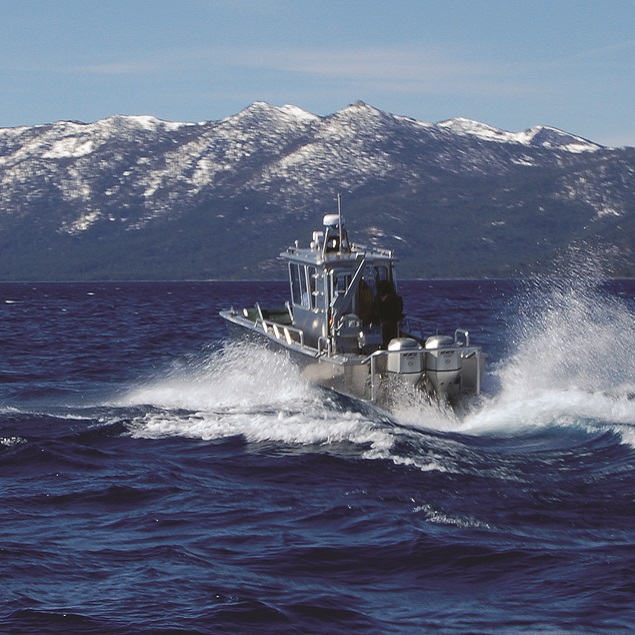 Research Vessels
Research Vessels
UC Davis maintains three research vessels, the R/V John Le Conte, R/V Bob Richards, and R/V Ted Frantz. These boats are moored at the Tahoe City Marina in Tahoe City, California.
The Flagship R/V John Le Conte was custom build by Freeman Marine in Gold Beach, Oregon. It was specifically designed to do a broad range of limnological research projects on Lake Tahoe. Hull and Superstructure is Heliarc welded 1061 Kaiser Aluminum. Powered by a Detroit Diesel 6V-53, 180 HP engine driving a 24" diameter stainless steel propeller. Twin Disc Power Take-Off runs 10 and 20 GPM hydraulic pumps powering a 4-spool Kohlstrand guardie winch and two Gearmatic 4000 lb. pull large winches with 1/4" and 1/2" wire ropes 3000 ft. long to reach the lake bottom.
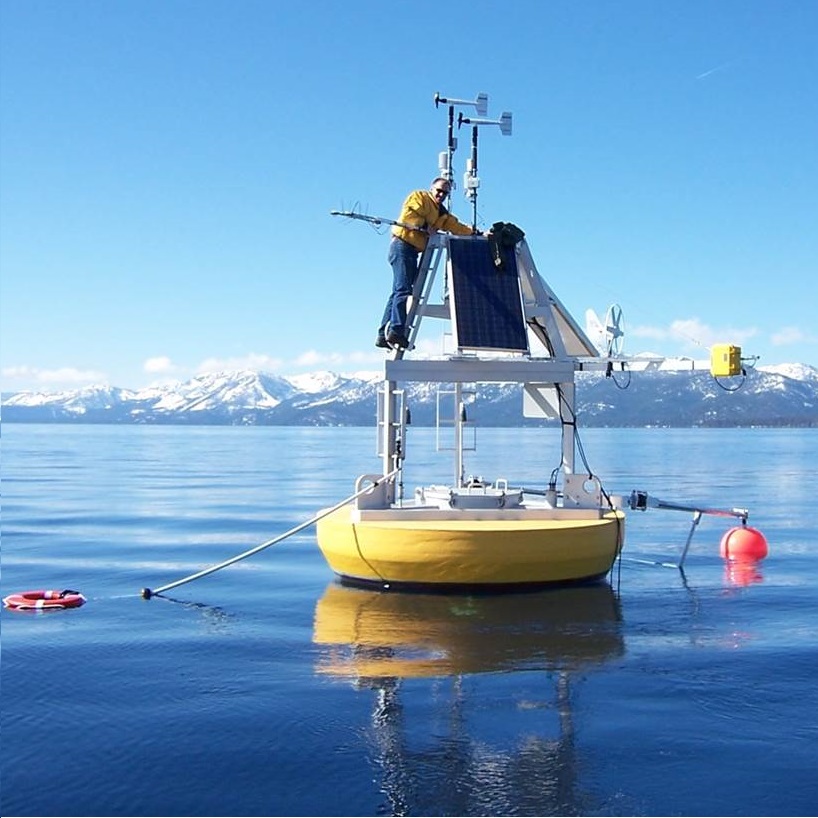 NASA Buoys
NASA Buoys
UC Davis TERC and the National Aeronautics and Space Administration Jet Propulsion Lab (NASA/JPL) have five large buoys on Lake Tahoe. Measurements are being used to understand the factors affecting the health of the lake and calibrate satellite instruments. Locations of each buoy may vary by up to 500 feet depending on wind conditions.
Offshore measurements include bulk temperature, skin temperature, air temperature, wind speed, wind direction, relative humidity, and net radiation.
Onshore measurements include air temperature, wind speed, wind direction, relative humidity, short and longwave radiation (up and down), sky imager, aerosols, and total column water.
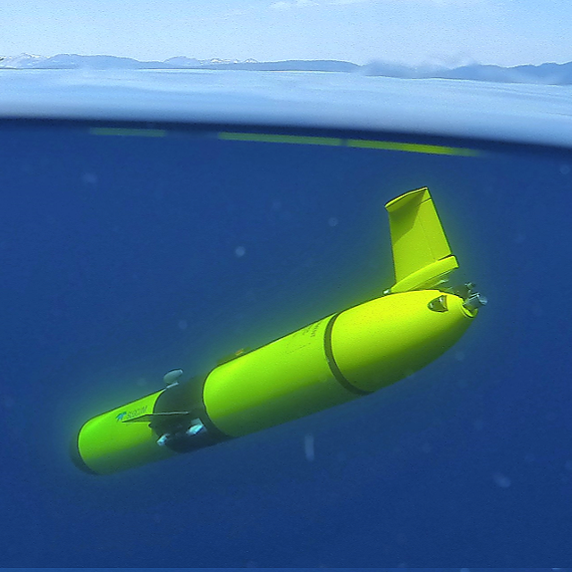 Gliders
Gliders
TERC researchers deployed an autonomous underwater glider named Storm Petrel in order to study how Lake Tahoe responds to wind and storms. The glider propels itself using changes in its buoyancy, can explore the lake for months at a time, periodically uploading data via satellite. Storm Petrel, whose maiden voyage was in Antarctica previously collecting data on the temperature, chlorophyll, and dissolved oxygen content of the water. All of these parameters will help researchers at TERC understand changes in the lake over time.
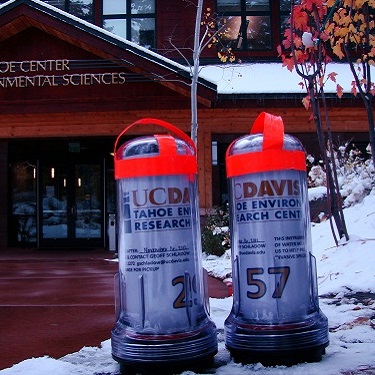 Drifters
Drifters
TERC has released swarms of floating drifters in Lake Tahoe to help map the motions of the surface currents. The drifters communicate their positions via satellite every 10 seconds. Four experiments have been conducted since December 2012. While in theory the drifters communicate their position in real-time, after they wash up on a beach this ability is lost. Thank you to all those members of the public who helped in finding and returning errant drifters!
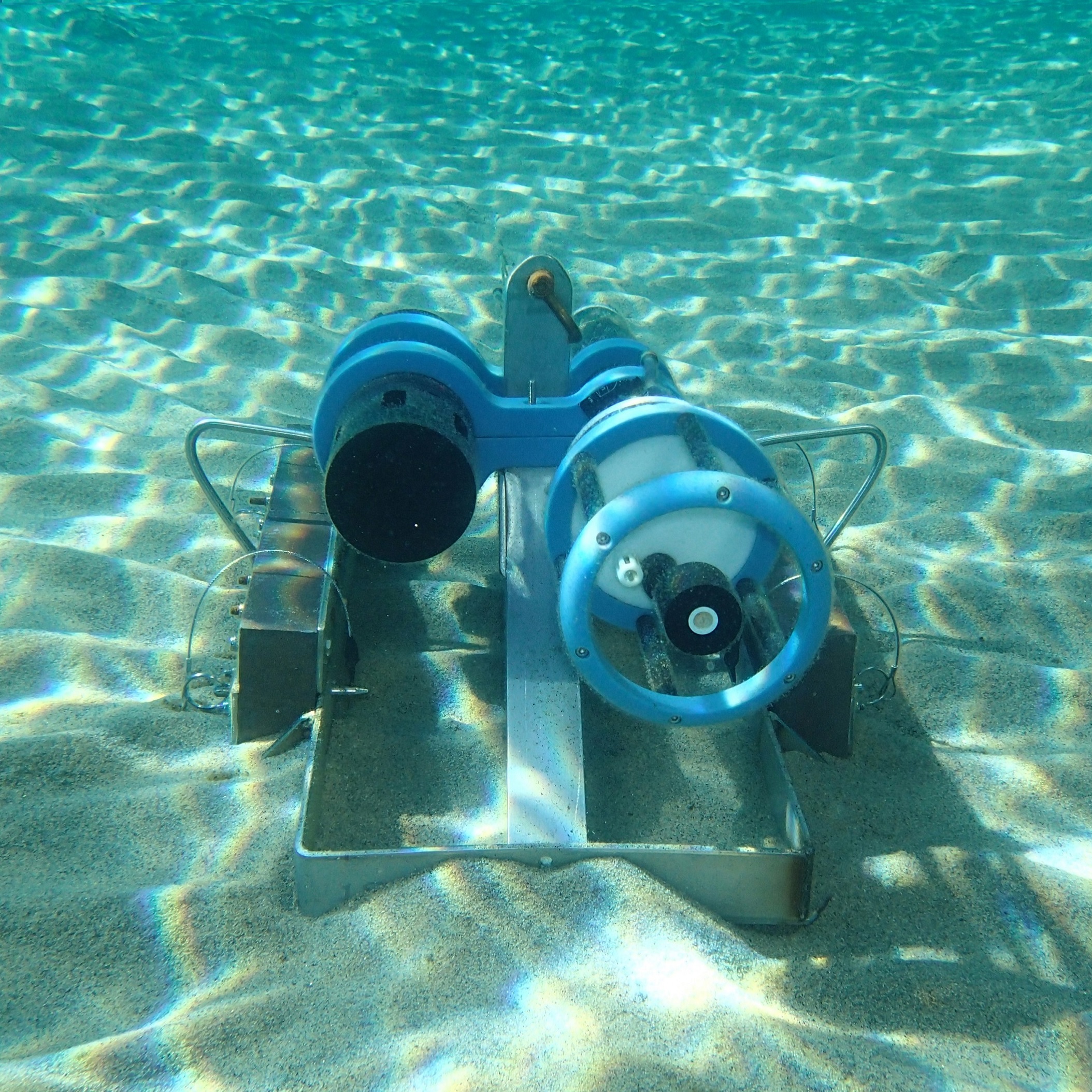 Nearshore Sensors
Nearshore Sensors
TERC has been working to launch a world-first, real-time nearshore water quality network at approximately 20 sites around the Tahoe basin. The first six Stations, spanning both California and Nevada, were launched in 2014. Each station measures water temperature, conductivity, water level, turbidity, algal concentration, and dissolved organic material. Extra sensors can be added in the future as added funding is acquired. An underwater cable supplies power to each station and returns the data, which will be instantly displayed on the internet via the Tahoe In Depth Touchscreen displays available in the Tahoe Science Center and the Tahoe City Visitor Center.
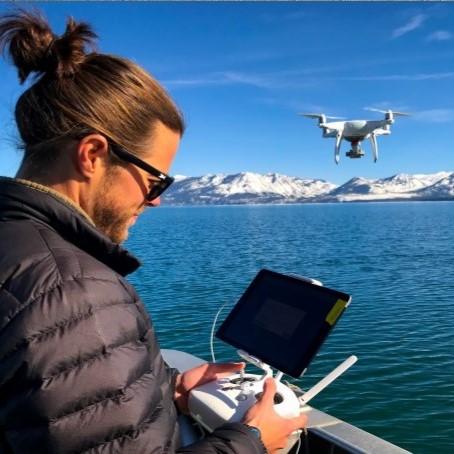
Unmanned Aerial Vehicles (UAVs)
Developments in unmanned aerial vehicles (UAV), commonly known as drones, have delivered countless new opportunities in remote sensing. UAVs provide a new and innovative approach to monitoring natural environments. TERC researchers utilize UAVs for both aquatic and terrestrial based applications throughout the Lake Tahoe Basin.
Laboratory Equipment
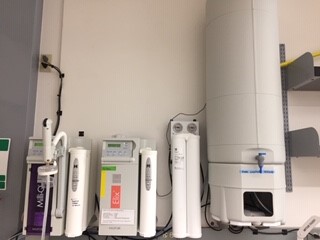 Deionized Millipore Milli-Q water system
Deionized Millipore Milli-Q water system
Tap water flows through a pre-filter, through an Elix-10 system, and into a 100 liter tank. From the 100 liter tank, the water then flows through the Milli-Q Gradient system and finally is brought down to a 0.22 µm particle size or smaller. At the point of use dispenser, this Deionized (DI) water is free of ions or contaminants greater than 0.22 µm. DI is ultra-pure water, with no positively or no negatively charged ions. DI water is the backbone of a chemistry laboratory studying lake water. This water is used in many ways. It acts as a control sample, in order to compare standards (known values) and lake/stream water samples in nutrient colorimetric chemistry. Secondly, Lake Tahoe water is so low in nutrients that the chemists use it to meticulously clean chemistry glassware in order to see differences between DI water and Lake Tahoe water.
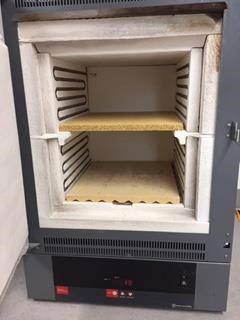 Isotemp Muffle Furnace, model #550-126
Isotemp Muffle Furnace, model #550-126
This muffle furnace has a temperature range between 50°C- 1125°C. The set point accuracy of this instrument is ±15°C. In our limnology lab is used to clean glassware, metal and glass fiber filters so they are devoid of carbon. Usually, we use it at 500°C (or 932°F) and cook the items for a couple of hours. This ensures there is no carbon contamination on equipment before use in the measurement for carbon in water samples.
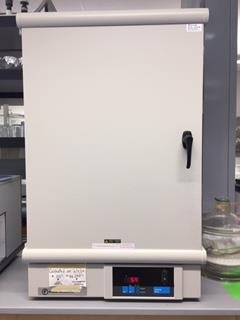 Isotemp Drying Oven, model #750G
Isotemp Drying Oven, model #750G
This drying oven is an Isotemp brand, model #750G. The temperature range can be set between 50°C-275°C. At 200°C the accuracy of this instrument ±3.0°C. At TERC a drying oven used in the field of limnology to evaporate water from filtered water samples. Water samples may be filtered for the following analyses: algae, fish, benthic invertebrates, soil. Once the sample is filtered, the filter itself is placed into a drying oven in order to evaporate and dry all water from the filter before analysis.
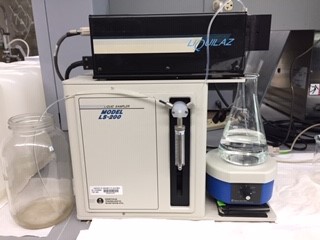 Particle Measuring Systems Inc. brand instrument, model #LiQuilaz-S05-HF with syringel model #LS-200
Particle Measuring Systems Inc. brand instrument, model #LiQuilaz-S05-HF with syringel model #LS-200
The LiQuilaz counts the number of particles within different size channels from lake and stream water samples. The reason we study the amount of particles in water samples is to attribute water clarity trends within lakes and streams. Urban runoff from roads and developed areas contain large loads of fine sediments as compared to natural forested stream runoff. These particles can run into Lake Tahoe, reducing lake clarity. Very fine sediments, those less than 20 µm in diameter (smaller diameter than human hair, 17-180 µm) can remain suspended in the water column for decades causing a decrease in Tahoe’s clarity.
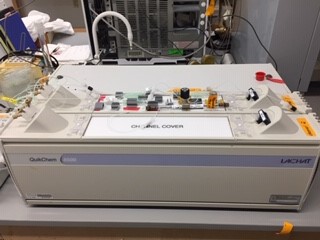 Flow through Injection Analyzer (FIA), model #Quik Chem series 8500
Flow through Injection Analyzer (FIA), model #Quik Chem series 8500
Equipped with Omnion 3.0 software and using an XYZ Autosampler (model #ASX520), this piece of equipment is used in TERC's limnology lab measuring nutrients from lake and stream water automatically, without the use of large quantities of samples.
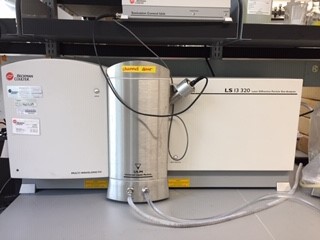 Beckman Coulter Laser Diffraction Particle Size Analyzer
Beckman Coulter Laser Diffraction Particle Size Analyzer
Because of it's ability to measure particles from liquids between 0.04µm-2000µm in size, this piece of equipment is used to count particles within different categorized sizes within storm water samples. During high flow events of urban areas, automatic storm water samplers collect water samples which include both tiny and large particles. These larger particles would be swept downstream and settle to the bottom of Lake Tahoe. By capturing these samples, we can better understand the types of particles entering Lake Tahoe.
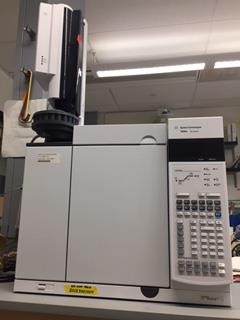 Agilent Technologies GC System, model #Z890A
Agilent Technologies GC System, model #Z890A
Fitted with an autosampler of the same company with model #G4513A, this gas chromatograph has many uses. At TERC, we use it to measure fatty acids. A lake high in omega-3 fatty acids will increase the size and concentration of the zooplankton population. An increase in the zooplankton population will flow through the food chain, increasing fish populations and fish size.
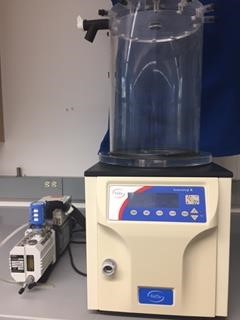 VerTis BenchTop 6K Freezer Dryer, model #6KBTEL
VerTis BenchTop 6K Freezer Dryer, model #6KBTEL
A freezer dryer is used in the analytical process to determine dry weights of organisms. Freeze drying organisms allows us to perform our analysis without affecting chemical compositions in our samples. This model includes an acrylic manifold with 12 ports.
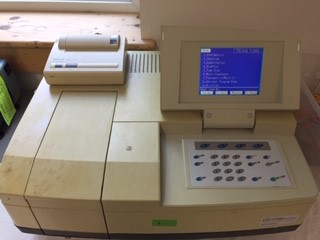 Shimadzu UV-1700 series Spectrophotometer
Shimadzu UV-1700 series Spectrophotometer
With a wavelength range of 190-1100 nm, we measure several forms of phosphorus and nitrogen that algae use to grow. To accomplish this, we add chemical reagents to our lake water samples, which changes the color of the sample, the greater the concentration, the deeper the color. The spectrophotometer uses light absorption to determine the concentration of matter in a solution. This instrument emits a beam of light of a specific wavelength through each sample, and detects how much light is being absorbed of a certain color or wavelength. The more light that is absorbed, the higher concentration of solutes in the sample.
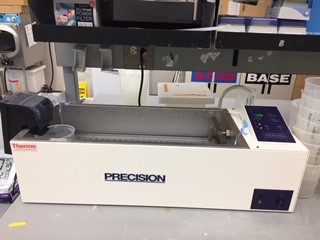 Thermo Scientific Precision Reciprocal Shaking Water Bath, model #2872
Thermo Scientific Precision Reciprocal Shaking Water Bath, model #2872
The uniformity at 37°C with the cover is ±0.1°C and without the cover is ±0.2°C. Water baths ensure that our water samples, control samples, and chemical reagents are within the same density of one another. This ensures our analyzed nutrient values are accurate. The set temperature of the bath is dictated by the Class A glassware used in the laboratory, which requires it to be set to 20°C.
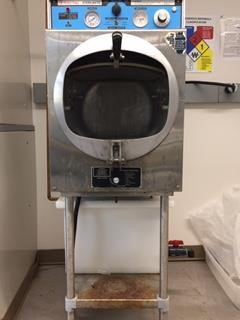 Market Forge Sterilmatic Sterilizer, STM-E Type C
Market Forge Sterilmatic Sterilizer, STM-E Type C
There are three temperature settings (110°C, 116°C, 121°C), with settings for both slow and fast exhaust. An autoclave is widely used in the medical field as a sterilizer (for example, all of the dental tools are autoclaved before they are used in your mouth). Here at TERC, we use this instrument as a type of pressure cooker in some of our chemical analyses. During certain analyses, the autoclave will break apart water sample constituents, allowing us to analyze specific nutrients properly
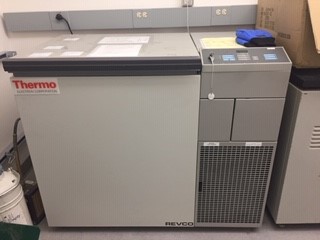 Thermo Fisher REVCO Chest Freezer, Model #ULT790-5-D33
Thermo Fisher REVCO Chest Freezer, Model #ULT790-5-D33
This freezer is set to -80°C (-112°F). This temperature is widely used in the sciences to stop biological activity within samples and allow researchers to store samples for long-term. At TERC, we store tree samples to keep volatile chemicals within the tree from evaporating out of the sample. We also store fatty acid samples within this freezer, so the fatty acids do not degrade before measurement.
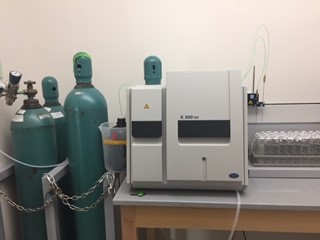 LaChat IL500 TOC, Type # LPV428.53.02003
LaChat IL500 TOC, Type # LPV428.53.02003
At TERC, this instrument is used to measure carbon dioxide within water samples. At Lake Tahoe, we use these measurements to monitor carbon dioxide concentration within the water column over time. The concentration of the carbon dioxide measured is input into an equation to determine primary productivity (PPr), shedding light on real time photosynthetic rates of algae living in Lake Tahoe.
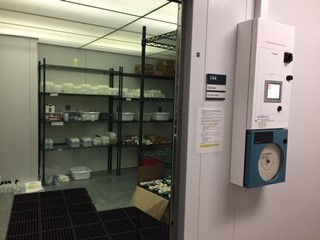 R.W. Smith Controlled Environment Room #1
R.W. Smith Controlled Environment Room #1
At approximately a 12 x 15ft, this space can be adjusted between 2 °C and 37 °C. The controls pictured outside of this room monitor temperature. The "cold room" is where our samples are stored until analysis. This room keeps the samples chilled at 4°C in order to slow down biological activity to its slowest point, without freezing them.
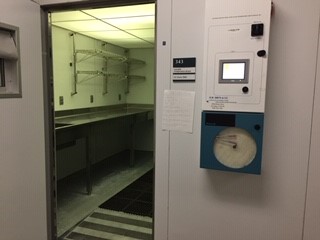 R.W. Smith Controlled Environment Room #2
R.W. Smith Controlled Environment Room #2
At approximately a 10 x 12ft, this space can be adjusted between 2 °C and 37 °C. The controls pictured outside of this room monitor temperature and humidity. The variable temperature room is a small laboratory that can be set to a specific temperature in order to conduct experiments in a precise, steady climate. One of our favorite experiments at TERC occurred in this room, where native and non-native fish eggs, kept at a constant temperature, were exposed to UV light. We discovered that only the native fish eggs survived due to their natural sun protection.
